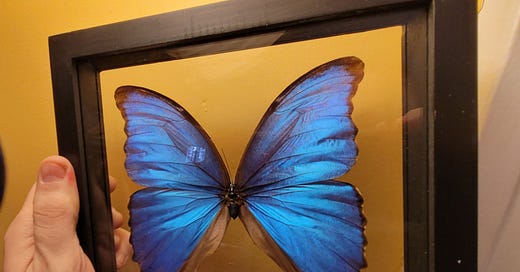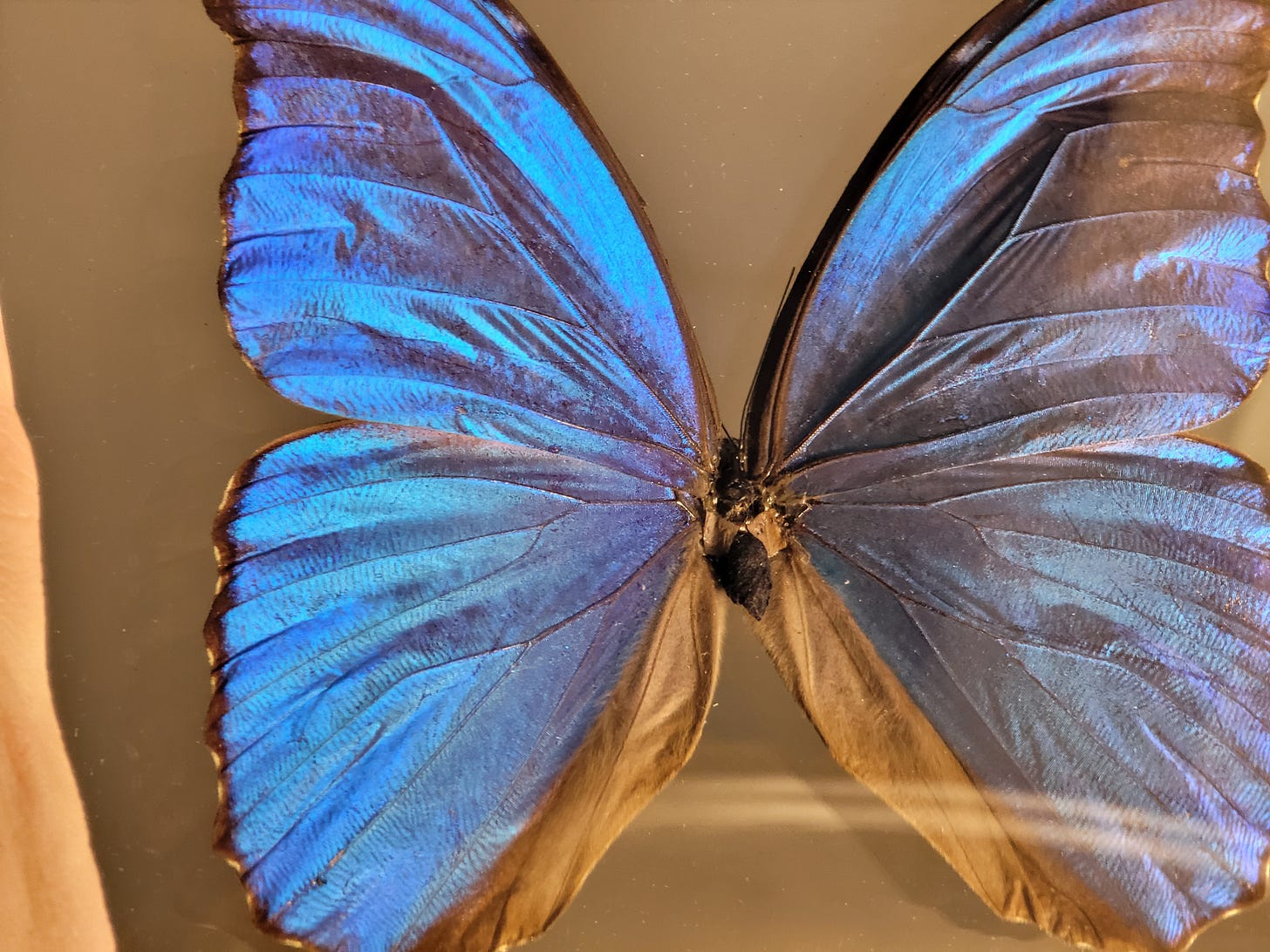Sometimes you just need a “this is cool science” post. In class, we’ve been talking about wave interference, and one commonly cited beautiful example of wave interference is the blue coloration of the blue morpho butterfly. I thought, by golly, I have to get one of those (dead and framed, of course), to show it to students, and then I’ll just hang it up in the living room or something. Arrived today.
There is no blue pigment here (indeed, blue pigments seem to be relatively rare in nature). What you’re seeing instead is constructive interference of light at a wavelength that corresponds to “blue”. You probably know we can represent waves something like this:
Imagine you have two waves, and they start exactly lined up - crest matches to crest. When they add together in this arrangement, it is called “constructive interference”, and it would produce a louder sound, or a brighter light, or a taller water wave. If you can imagine pulling one of the waves back (or to the left in our picture, say), but by exactly one wavelength, or exactly two wavelengths, and so on, you can probably imagine that they will still be lined up (crest will still match to crest).
This is basically what happens with light reflecting off the wings of a blue morpho butterfly. The wings have microstructures that are sometimes compared to Christmas trees. Below is a scanning electron microscope image from a researcher in Japan. The white line is about 1/100th the width of human hair.
As light waves reflect off of the different layers, because of the particular spacing of the layers, the reflected waves interfere with each other constructively at “blue” wavelengths (for example, a light wave that penetrates deeper might have to travel a distance that is exactly two wavelengths longer than another light wave, but then they’re still lined up, crest to crest, when they emerge and head toward your eye). Other colors will correspond to different wavelengths and so the waves will not be as well lined up, and so a shimmering blue is what you see (there is also an angle dependence that helps cause the shimmer).
So that’s pretty neat.







That's just one of the literally countless features God released when he created all of the "creeping things" in a single day's work.
Praise God for butterflies!